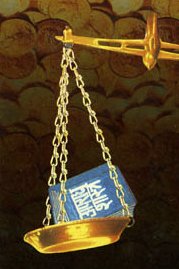Mahapratihara, Mahāpratīhāra, Maha-pratihara: 7 definitions
Introduction:
Mahapratihara means something in Hinduism, Sanskrit, the history of ancient India. If you want to know the exact meaning, history, etymology or English translation of this term then check out the descriptions on this page. Add your comment or reference to a book if you want to contribute to this summary article.
In Hinduism
Arthashastra (politics and welfare)
Source: Wisdom Library: ArthaśāstraMahāpratīhāra (महाप्रतीहार) refers to “great door-keeper” and represents an official title used in the political management of townships in ancient India. Officers, ministers, and sovereigns bearing such titles [eg., Mahāpratīhāra] were often present in ancient inscriptions when, for example, the king wanted to address his subjects or make an important announcement.

Arthashastra (अर्थशास्त्र, arthaśāstra) literature concerns itself with the teachings (shastra) of economic prosperity (artha) statecraft, politics and military tactics. The term arthashastra refers to both the name of these scientific teachings, as well as the name of a Sanskrit work included in such literature. This book was written (3rd century BCE) by by Kautilya, who flourished in the 4th century BCE.
India history and geography
Source: Cologne Digital Sanskrit Dictionaries: Indian Epigraphical GlossaryMahāpratihāra or Mahāpratīhāra.—(IE 8-2; EI 30; CII 3; BL), head of the door-keepers of the palace or the king's chamber, or of the capital; city; sometimes explained as ‘the chief usher’ (CII 4). See Pratihāra. (HD), the superior officer above all door-keepers, the great chamberlain. See Kādambarī, para. 97; Rājataraṅgiṇī, IV. 142; Ep. Ind., Vol. X, p. 75; etc. (IE 8-2), one of the designations often included in the pañca-mahāśabda, as indicated by the Rājataraṅgiṇī. (IE 8-3), sometimes also called Mahārāja, Mahāsāmanta, Mahāpīlupati, Pañcakaraṇ-oparika, Pāṭy-uparika, Purapāl-oparika, etc., additionally. Note: mahāpratihāra is defined in the “Indian epigraphical glossary” as it can be found on ancient inscriptions commonly written in Sanskrit, Prakrit or Dravidian languages.

The history of India traces the identification of countries, villages, towns and other regions of India, as well as mythology, zoology, royal dynasties, rulers, tribes, local festivities and traditions and regional languages. Ancient India enjoyed religious freedom and encourages the path of Dharma, a concept common to Buddhism, Hinduism, and Jainism.
Languages of India and abroad
Sanskrit dictionary
Source: DDSA: The practical Sanskrit-English dictionaryMahāpratīhāra (महाप्रतीहार).—a chief door-keeper.
Derivable forms: mahāpratīhāraḥ (महाप्रतीहारः).
Mahāpratīhāra is a Sanskrit compound consisting of the terms mahā and pratīhāra (प्रतीहार).
Source: Cologne Digital Sanskrit Dictionaries: Monier-Williams Sanskrit-English DictionaryMahāpratīhāra (महाप्रतीहार):—[=mahā-pratīhāra] [from mahā > mah] m. a chief door-keeper, [Rājataraṅgiṇī]
[Sanskrit to German]
Sanskrit, also spelled संस्कृतम् (saṃskṛtam), is an ancient language of India commonly seen as the grandmother of the Indo-European language family (even English!). Closely allied with Prakrit and Pali, Sanskrit is more exhaustive in both grammar and terms and has the most extensive collection of literature in the world, greatly surpassing its sister-languages Greek and Latin.
Nepali dictionary
Source: unoes: Nepali-English DictionaryMahāpratihāra (महाप्रतिहार):—n. hist. chief door-keeper in a palace;
Nepali is the primary language of the Nepalese people counting almost 20 million native speakers. The country of Nepal is situated in the Himalaya mountain range to the north of India.
See also (Relevant definitions)
Partial matches: Maha, Pratihara.
Starts with: Mahapratihara-pida.
Query error!
Full-text: Mahapratihara-pida, Mahapratihaar, Divirapati, Mahadvara-adhipati, Patyuparika, Panca-adhikaran-oparika, Mahakarttakritika, Mahapilupati, Mahadandanayaka, Mahasamanta, Maharaja, Pratihara.
Relevant text
Search found 7 books and stories containing Mahapratihara, Mahāpratīhāra, Maha-pratihara, Mahā-pratīhāra, Mahāpratihāra; (plurals include: Mahapratiharas, Mahāpratīhāras, pratiharas, pratīhāras, Mahāpratihāras). You can also click to the full overview containing English textual excerpts. Below are direct links for the most relevant articles:
Tilakamanjari of Dhanapala (study) (by Shri N. M. Kansara)
8. Government officers and servants < [Chapter 14 - Political data]
Harshacharita (socio-cultural Study) (by Mrs. Nandita Sarmah)
Part 3: Other Office Bearers of the Government < [Chapter 5 - Political Aspects]
Kingship in early Medieval India (by Sudip Narayan Maitra)
Part 2 - Mahanadi Delta region: Sub Period I: 300-600 A.D. < [Chapter 3 - Kingship And Polity In Mahanadi Delta Region]
Part 4 - Mahanadi Delta region: Sub Period III: 900-1300 A.D < [Chapter 3 - Kingship And Polity In Mahanadi Delta Region]
Impact of Vedic Culture on Society (by Kaushik Acharya)
Dharmadhikarana and Dharmadhikarin < [Purana, Volume 6, Part 2 (1964)]
Brihatkatha-kosha (cultural study) (by Himanshu Shekhar Acharya)